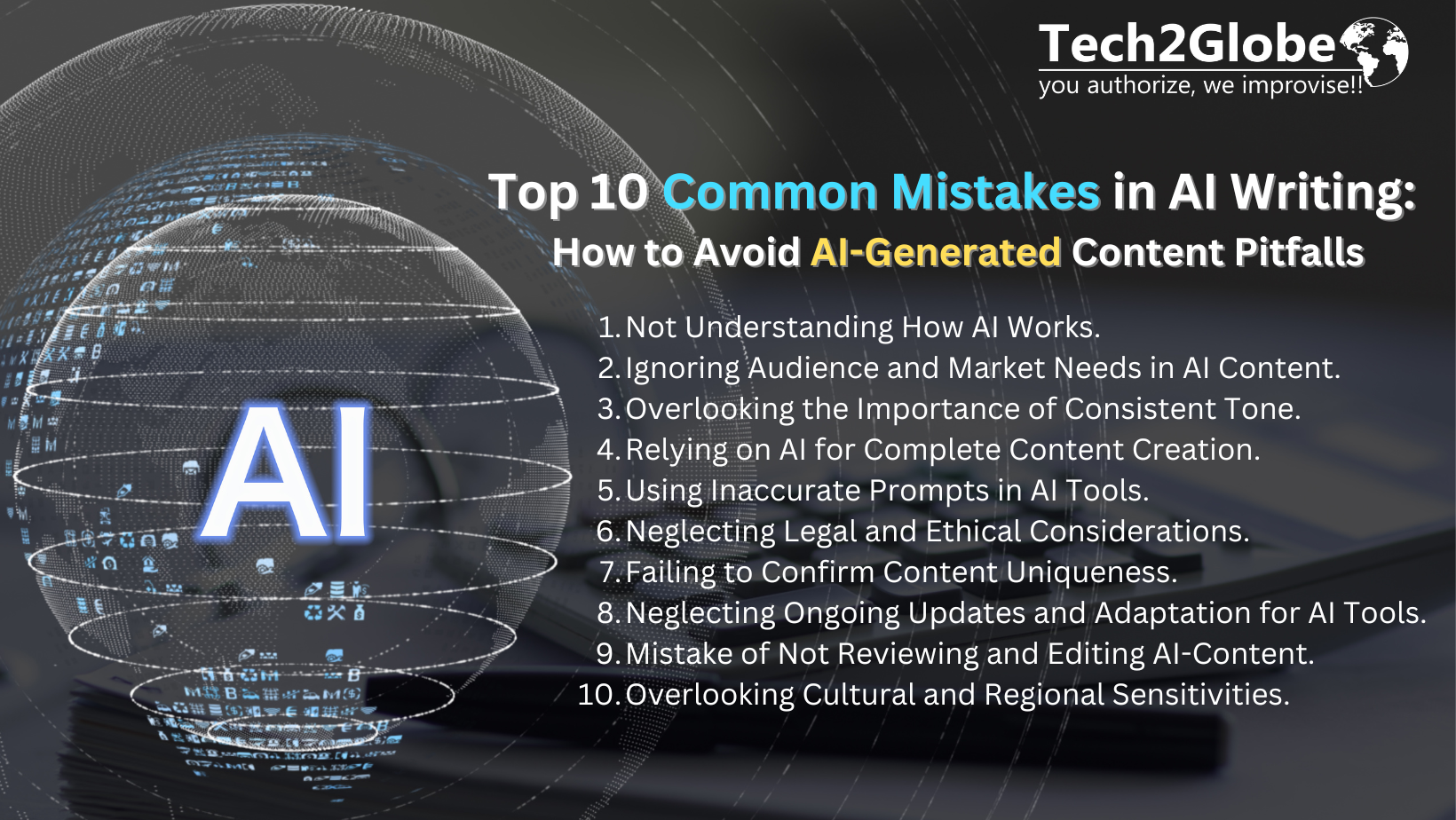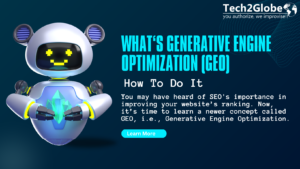Summary: Do you feel like AI-generated content lacks the human touch? You’re not alone! If you’ve noticed your content sounding robotic or generic, it might be due to over-common AI words. This blog is here to guide you through some common pitfalls in AI writing and offer tips on infusing your content with that much-needed human flair.
AI content creation has made it simple for content creators and marketers using tools like ChatGPT and Gemini to quickly and effortlessly create content. But just how accurate is the content these tools offer? 75% of consumers worry about false information from artificial intelligence, claims Forbes Advisor.
AI content creation tools are transforming how we approach content research and creation. However, these advancements can quickly backfire if you’re not mindful of the common mistakes of AI writing. Despite artificial intelligence’s role in writing to enhance productivity, it fails to avoid frequent pitfalls that can derail your content strategy.
If you’re not careful, AI-generated material can negatively impact your audience. If you run a business, for instance, it could cause misalignment with your brand’s voice; if you create content, it could result in an inconsistent and impersonal message. By understanding and addressing these common errors, you can maximize the benefits of AI:
- Not Understanding How AI Works.
- Ignoring Audience and Market Needs in AI Content.
- Overlooking the Importance of Consistent Tone.
- Relying on AI for Complete Content Creation.
- Using Inaccurate Prompts in AI Tools.
- Neglecting Legal and Ethical Considerations.
- Failing to Confirm Content Uniqueness.
- Neglecting Ongoing Updates and Adaptation for AI Tools.
- Mistake of Not Reviewing and Editing AI-Content.
- Overlooking Cultural and Regional Sensitivities.
1. Not Understanding How AI Works
First on our list of “common mistakes of AI writing” is not knowing how to use AI tools. Several AI tools can help you generate content, such as ChatGPT, Jasper, Copy.ai, Writesonic, etc. But what’s their use if you don’t know how?
Don’t worry; it’s not like you have to be an expert to use a generative AI tool. Still, knowing how it works is helpful. Many people don’t bother to learn how AI works, making it hard for them to use it effectively.
For example, these are a few things to remember before using AI to create content:
- Choose the right tool.
- Define your goals.
- Give clear instructions.
- Review and edit.
- Check for errors.
2. Ignoring Audience and Market Needs in AI Content.
It’s important to keep your audience and target market in mind even when you use an AI writer to write content. Every content marketing campaign has a persona or ideal customer profile that tells you how to write your content. For example, if you’re writing for top executives, you’ll want detailed and technical content. But if your audience is everyday people, keep the language simple and easy to understand.
3. Overlooking the Importance of Consistent Tone.
Another common AI art mistake is not optimizing for tone of voice and needing consistency with your brand. This is a big mistake in AI content creation as well. If you don’t consider these important things, your content will look like it was put together without much thought.
Additionally, consider to specify, in the prompt, the particular tone you want your content to have, such as friendly, enthusiastic, informational, professional, and so on.
4. Relying on AI for Complete Content Creation.
There’s nothing wrong if you use AI to write specific content, but the problem arises when you rely on it entirely. This means you may skip researching the topic or fail to find relevant references and statistics to support your content.
Yes, AI tools can help you save time and generate content in seconds, but they often lack the depth and creative innovation the human touch provides. However, AI tools excel at producing short-form content. For instance, you can use them to create social media posts, product descriptions, and video descriptions.
Also, AI writing assistants are meant to make your work easier, not take it over. You might want to rely on AI to make your content, but your audience will probably notice. Also, using AI too much can make you less creative and worse at writing.
5. Using Inaccurate Prompts in AI Tools.
If you want the best results from artificial intelligence in writing, enter accurate prompts. Users frequently make the mistake of not entering precise prompts, one of the most common AI mistakes we see. For the tool to better understand your requirements, it is important to enter accurate inputs, depending on the type of content you want. Following the utilization of the keywords, the tool will then search for data within its algorithms to generate the content that you desire.
6. Neglecting Legal and Ethical Considerations.
Following certain legal and moral rules in content marketing is very important, just like in any other business. Not taking these things into account can not only hurt your search rankings but could also lead to much worse problems.
If you break someone else’s copyright, plagiarize, use biased data, breach their privacy, or spread false information, it can hurt both them and your business. AI tools that make content are trained on data, and this data could be biased or false. This is why it’s important to use a trustworthy AI content tool that gives you only original content that doesn’t need to be attributed.
If you use copied content, it could hurt your search rankings right away. So make sure you use a plagiarism checker on the content that AI made before you publish it.
7. Failing to Confirm Content Uniqueness.
There are different things that take away the uniqueness of the content if it is AI-generated. Whether it’s the use of common AI words like “delve,” “testament,” “realm,” “dynamic,” “elevate,” “tapestry,” and “embark,” or over-optimizing content for search, these factors can negatively impact both your rankings and the interest of your readers. Therefore, make sure the content is good and that SEO basics are used correctly.
8. Neglecting Ongoing Updates and Adaptation for AI Tools.
Many company owners using artificial intelligence tools sometimes overlook that, like any program, generative AI tools also need constant learning and adaptation. One of the common mistakes of AI writing is not ensuring the tool is functioning as it should help satisfy users’ modern needs. Ignoring the need to update and optimize your AI tool might cause the tool to perform badly. Thus, ensure your tool is customized to match market trends and routinely trained on fresh datasets.
9. Mistake of Not Reviewing and Editing AI-Content.
AI tools can write content that sounds convincing on a wide range of topics. However, they often include false information, especially when the topic is technical or complicated. Another common AI art Mistake is making details look real but needing to be true to life. Refrain from believing that everything the AI writes is true! It is very important to check any numbers, claims about science, product information, or other concrete facts in the output twice.
10. Overlooking Cultural and Regional Sensitivities.
Marketing today must prioritize diversity, equity, and inclusion. However, AI-based content creation makes these factors easy to overlook. An AI tool may not produce diverse or culturally sensitive content if not trained on diverse data.
It is crucial to check the content for cultural, racial, and gender bias and to avoid offending any group. Be careful that the tool doesn’t take your text input out of context and create something negative for your brand.
ConclusionIn the end, use simple language that people can understand. It is possible to make your content less AI-driven and more human-written, but it can be hard to do. If you need help, our Content Marketing Services can help you avoid common AI art mistakes and make content that is interesting and informational to people.

Sahil Verma is a strong pillar of Tech2Globe’s success. As Vice President of Sales, he has played a pivotal role in the company’s growth for over the years. His expertise spans across web, mobile, and software development consulting. With his experience of 15+ years he leverages cutting-edge technology to help businesses build revenue-generating applications. Known for his client-centric approach, Sahil has a knack for understanding each business’s unique needs and offering them prompt solutions. This allows him to recommend technology solutions that enhance their intelligence, efficiency, and ultimately, profitability.










